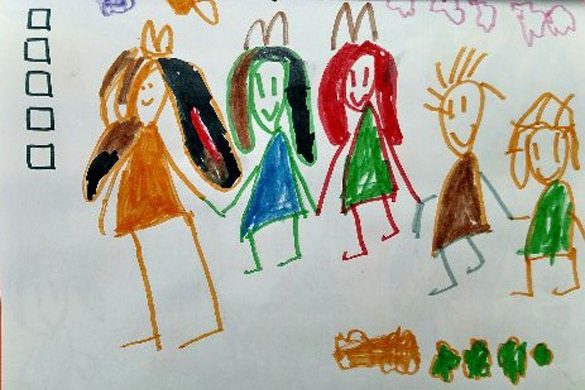Number: Counting and Cardinality
Children practice several skills as they learn to count. They learn the names for numbers, how to recite them in the correct order, how to count with one-to-one correspondence, how to know how many in all (cardinality), and how to connect this concept of number to written numerals. The sections below discuss some of the mathematical skills that children are building. In mathematics, just as in their language and social/emotional skills, young children vary greatly in what they know and are able to do depending on their development and the experiences they’ve had. The more that mathematical ideas and play and talk becomes a regular part of their environment, the more they will learn.
Why is counting and cardinality important in early math? Sub-Topics
Some children will know the number words but not be able to recite them in the correct order (i.e. 1, 2, 6, 4, 5, 10) or routinely skip a certain number (i.e. 1, 2, 3, 5, 6—always skipping 4). Recite the number list frequently in the day (when waiting for the bathroom, passing out or cleaning up materials) and listen to children recite it, helping them where needed. Many children benefit from hearing rhythm to the list: “one, two, three; four, five, six;…” Tone can give salience too, particularly when children are stuck on a certain number. Saying: “Let’s count together. One, two, three, four” each as if they’re anticipating something special, and then “five!” at the end as if it were the special surprise we were all waiting for. Then: “See, five comes after four! Now you do it!”
When children have one-to-one correspondence that means connect exactly one counting word to exactly one object. For example, a child counts three cubes as “one, two, three,” touching each object only once and assigning only one counting word to each. This is a more complicated endeavor than it appears, because it requires two kinds of matches: (1) “matching a moment of time when the action occurs and a word is said”; and (2) “matching in space where the counting action points to an object once and only once” (NCTM, 2010, p. 13). Young children often recite the words and touch the objects at different rates, going through the right actions—reciting and touching—but not yet with the right meaning. You can model the correct counting to help them remember that each object needs one point and one number word; you don’t skip any. Or you can say, “You might have missed one. Can you check?”
Before cardinality, children may count accurately (i.e., with one-to-one correspondence) but not yet recognize that the last number said when counting tells them the total amount in the collection. After children count a set, we can ask them “How many do you have altogether?” If they state the total number, they are showing an understanding of cardinality. If they recount the set, then they may not understand cardinality yet. We can help them by restating the total number after counting: “1, 2, 3. There are 3 tokens in all.”
An essential aspect to building students’ foundational understanding of cardinality is “subitizing.” Subitizing is instantly seeing how many for small quantities. For example, instantly recognizing that two fingers is two. Most children (and adults) do not need to count “one, two” to know how many. Even practiced adults generally do not subitize quantities greater than 4 or 5 but, as children gain experience, they will begin to see clusters of 1, 2, and 3 within a larger quantity (up to about 10) and then be able to use those chunks to recognize the quantity immediately. For example, while 8 dots is generally too large to see immediately as 8, we can mentally “chunk” them into two groups of four and ‘know’ 8 very quickly.
Learning the written numerals is similar to learning the letters of the alphabet. Children need repeated exposure and need to connect the written symbol to its meaning. For letters, they connect the written symbol to the letter name and the sound. For numerals, they connect the written symbol to the number name and the quantity it represents. The figure below shows this relationship. Some children may be ready to start writing numerals themselves just as they are writing some of the letters of their name. You may want to start them by writing the numeral for their age.



